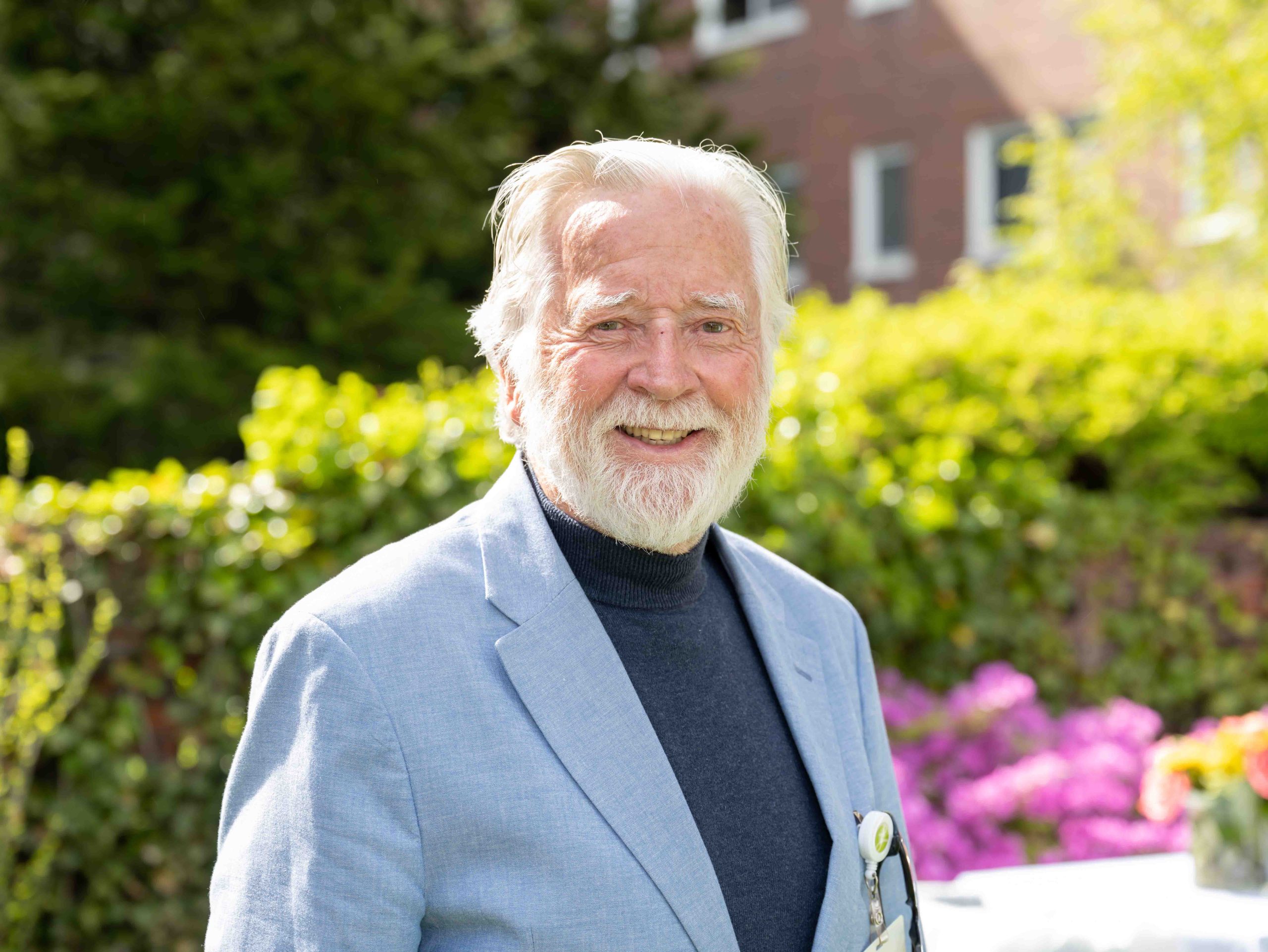Radiologist Augustine “Austin” O’Keeffe, MD, has been a dedicated and highly respected member of the Beverly and Addison Gilbert Hospitals community for close to half a century. During this time, he has held numerous physician leadership roles, including Chief of Radiology and President of Beverly Radiology Associates, where he practiced for several decades. He was also a longtime member of the Beverly Hospital Board of Trustees. After retiring from his clinical practice in 2015, O’Keeffe soon returned as Chief Medical Officer of Philanthropy. In this unique role, he leveraged his network of friends and colleagues in the community, helping secure several significant gifts. O’Keeffe fully retired in December 2023.
Originally from Ireland, where he attended the National University of Ireland Medical School, O’Keeffe completed his residency at Lahey Clinic and a one-year fellowship in vascular radiology at Peter Bent Brigham Hospital (now Brigham and Women’s Hospital). An accomplished sailor, who once made a 26-day solo voyage from Manchester-by-the-Sea to County Cork in Ireland, O’Keeffe is well-known for his good humor, congenial manner, and clinical acumen—and importantly, for his commitment to high-quality imaging, delivered with care and compassion.
You attended medical school in Ireland. How did you end up practicing on the North Shore?
When I first came to the U.S., my intention was to get my postgraduate education here and then go back to Ireland. So, finding a residency that would be recognized worldwide was an important first step. Landing at Lahey Clinic fit the bill and led to a fellowship in Boston and eventually a job at North Shore Radiological Associates in Winchester. By that time, I was married and had two kids. I had also fallen in love with the North Shore area. It was a difficult decision to stay in the U.S., but one I’m glad I made. I’ve lived in Manchester-by-the-Sea ever since.
What led you to pursue a career in medicine and specialize in radiology?
I come from a humble background. My family made their living through farming and shopkeeping. But my parents were entrepreneurs and eventually were doing well enough to send me to boarding school and then medical school. I was an ambitious student and knew I wanted to do something altruistic with my career. And I was drawn to the medical field. I chose to specialize in radiology because I found the detective work involved in diagnosing and eventually treating disease to be so intriguing.
You worked as a radiologist for decades; what kept you engaged?
I always enjoyed caring for patients and working with my colleagues. I also found my physician leadership roles to be very fulfilling—both at the hospital and in the practices where I worked. As a trustee, I had the opportunity to be part of the decision-making process when Addison Gilbert Hospital became affiliated with Beverly Hospital, and then again when the two hospitals became part of the Lahey system. I always enjoyed having a seat at the table during times of transformation and helping improve patient care in our community.
How did the field of radiology change and evolve throughout your career?
When I started, the technology was very basic, nothing like it is today. We only did X-ray exams and used actual film, developed like a photo. Since then, we’ve added ultrasound, CT scanning, MRIs, and interventional radiology. I was continuously learning about new imaging technology. Artificial intelligence is the next evolutionary step in the field. It’s already being used to help interpret images and assist radiologists in the diagnostic process.
In 2016, after you joined the philanthropy team at Beverly Hospital. What interested you in this role?
After I retired from my medical practice, I still wanted to contribute to the hospital and the broader community. The Chief Medical Officer of Philanthropy position was based on one at Lahey Medical Center that had proven to be quite successful, and it seemed like a good fit. I’m well-known on the North Shore and that was seen as an advantage, especially when it came to connecting with physicians. Philanthropy is vital to the work we do at the hospital, and I always had great respect for our philanthropy teams, who were collaborating with leadership and physicians to drive impact. Some of the largest gifts that I was part of were focused on expanding behavioral health services at the hospital, which is a big win for the region.
What will you miss most now that you are fully retired?
I’ll miss the camaraderie with physicians and clinical staff; being part of a team that is doing important work and improving lives. It has really been a privilege to work alongside such a talented group of people and make a difference in my own community.
